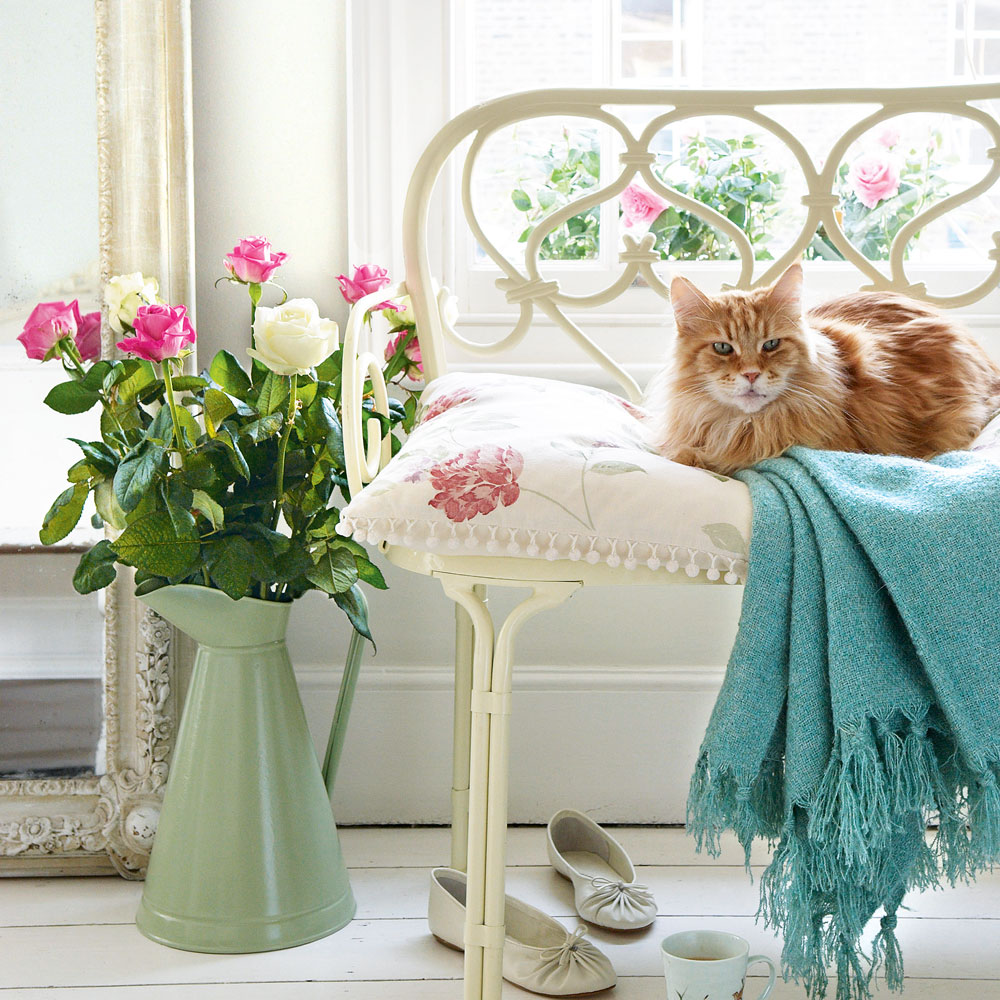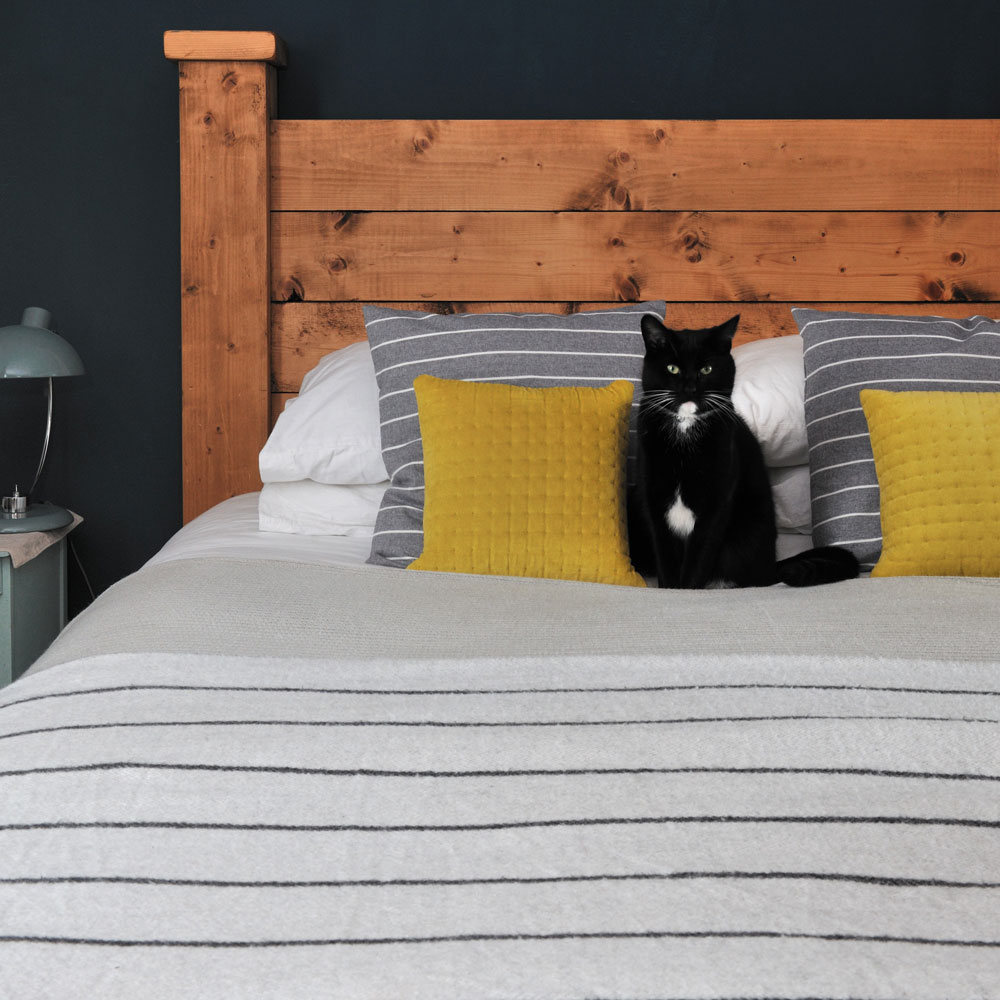How to get rid of fleas – for a happier home and healthier pets
It's flea season! Follow our step-by-step guide on how to get rid of fleas in the house
As Britain braces itself for freezing temperatures millions of households are set to crank up the heating, and for longer periods of time. But in doing so are inadvertently providing fleas with the optimum conditions needed to multiply. Yuk. Want to know how to get rid of fleas? If the answer is yes, then read on.
Stay warm: How to keep your house warm in winter – insulate against the cold and block those drafts
From natural ways to remove fleas to getting rid of fleas from your home and pets, we'll tell you how to get rid of these dreaded pests for your house with our step-by-step guide.
How to get rid of fleas

Did you know that fleas can multiply by 800 million in just a matter of days? Fleas live on their host, but eggs can be left on carpets, bedding and even you. Yes, you heard that right!
Warm environments lead to flea infestations, which is why you often see outbreaks at this time of year. Flea pupae – the cocoons in which fleas encase themselves in – can lie dormant in homes for months. They start hatching as temperatures indoors rise, with central heating being a catalyst. The warmer the home, the faster flea eggs develop into adults.
Dr. Karlien Heyrman, from Pets at Home, explains, 'If left untreated, long term flea infestations can cause real suffering for pets - including dogs, cats and even small furries. Repeated bites can be uncomfortable and itchy for the pet, sometimes resulting in hair loss or a secondary skin infection. Fleas can and may also bite humans in the most serious of cases. Regular, preventative treatment is a sensible precaution for all pet owners.' Enough said.
The first step after discovering you have a flea infestation is to clean everything that comes into contact with the host. This advice guide will walk you through the process of ridding yourselves and your home from these pesky blood-suckers.
Sign up to our newsletter for style inspiration, real homes, project and garden advice and shopping know-how
1. Quarantine infected pets

Keep infected pets away from others and out of key living spaces to prevent the fleas from spreading.
2. Clean, clean, clean
Only adult fleas live on your pet but the eggs are in the environment. This is why, if your pets have fleas you must treat and clean your house as well.
- Collect all bedding, throws, rugs and clothing and wash them in soapy water - washing liquid will do. The soapy water is known to kill the eggs, larvae, pupae and adults.
- Vacuum everything. That includes all the carpets, furniture, cracks in the floor if you have wooden flooring, behind doors, mattresses and anywhere else that collects dust. Best practise is to throw away the dustbag or empty the canister after each clean.
- The remaining flea larvae can be dealt with by having the carpets steam-cleaned. You could also shampoo your carpet with insecticidal shampoo or have a pest control expert professionally apply an infrared heat treatment to the carpet, which kills all stages of fleas. However, this type of treatment is costly.
- Wash down your pets usual resting zones with plenty of soap and water to drown any existing fleas that might be awaiting their return. Check the label of your pet bedding and wash regularly at the temperature shown.
3. Check that you haven't been infected
- Fleas attack humans, too. If you suspect that you might be a victim of an infestation, it is best to take precautionary measures. Bathe one or two times daily with soap.
- Comb your hair with a specially designed flea comb designed to drag fleas out from hiding. A lice comb may be sufficient if the flea population in your home is relatively small.
- Anything you touch is a vector for fleas. Wash it thoroughly.
4. Make sure pets are thoroughly treated for fleas

- You need to make sure that you have effectively removed all fleas from your host.
- Wash your pet with soapy water (this might prove a little difficult for cats). Wash the neck first. This way, fleas don't jump up to the head during the bath. Keep lathering your pet for up to 15 minutes to ensure that all the fleas have been killed. Rinse your pet under lukewarm water for several minutes, making sure to cleanse all the soap from its skin.
- Comb your pet daily with a flea comb and dispose of any fleas you find in soapy water. Alternatively, you can use a lint roller to pat your animal down. This method works best on short haired animals.
- Please note: You may want to take your pet to the vet before giving the animal a bath or using an insecticide shampoo to ensure the pet's safety. Some pet supply stores will bathe your animal for a small fee.
Take caution when applying flea treatment to yourself and your pet. Only use treatments for the animal they are meant for. Cats and dogs may require different treatments.
How to prevent fleas

Prevention is always better than cure, so here are a few tips to control any future infestations.
5. Take further precautions
- Restrict pets to areas that are easily cleaned or changeable.
- Fleas love carpet fibres so be sure to vacuum as often as you can. Dispose of vacuum bags immediately after use.
- Lay towels anywhere that your pet is likely to sit, and wash them all every week until the fleas are gone, and every so often after that.
- Comb your pets daily with a flea comb and record you find so you can identify any surges in the flea population. Use soapy water to kill them.
Natural ways to remove fleas

- Spread salt over the surface of your carpet. The salt crystal will attaches itself to the flea, drying it out. After 2-3 days, vacuum the salted area very thoroughly, making sure to pick all the salt and flea carcasses from the carpet. Repeat the process.
- Make your own herbal flea bath. Take two cups fresh rosemary leaves and add them to two pints of water. Boil for approximately thirty minutes. Strain the liquid, discard the leaves and mix it with up to a gallon of warm water. Pour this over your pet. Do not rinse off, but allow your pet to air dry or dab them lightly with a towel or tissue paper.
Tips and warnings
- Always check with your vet for potential allergens. Please do not use tea tree oil, cedar oil and citrus oil on cats. It could be potentially fatal.
- When using any chemicals, follow the instructions carefully.
- Make sure you wash your hands before and after eating and using chemicals, especially children.
Related: The ‘invisible cleaning’ a Dyson expert says we should all be doing – but are you?
We hope this how to get rid of fleas article will help to control your flea infestation.
Jennifer is the Deputy Editor (Digital) for Homes & Gardens online. Prior to her current position, she completed various short courses a KLC Design School, and wrote across sister brands Ideal Home, LivingEtc, 25 Beautiful Homes, Country Homes & Interiors, and Style at Home.